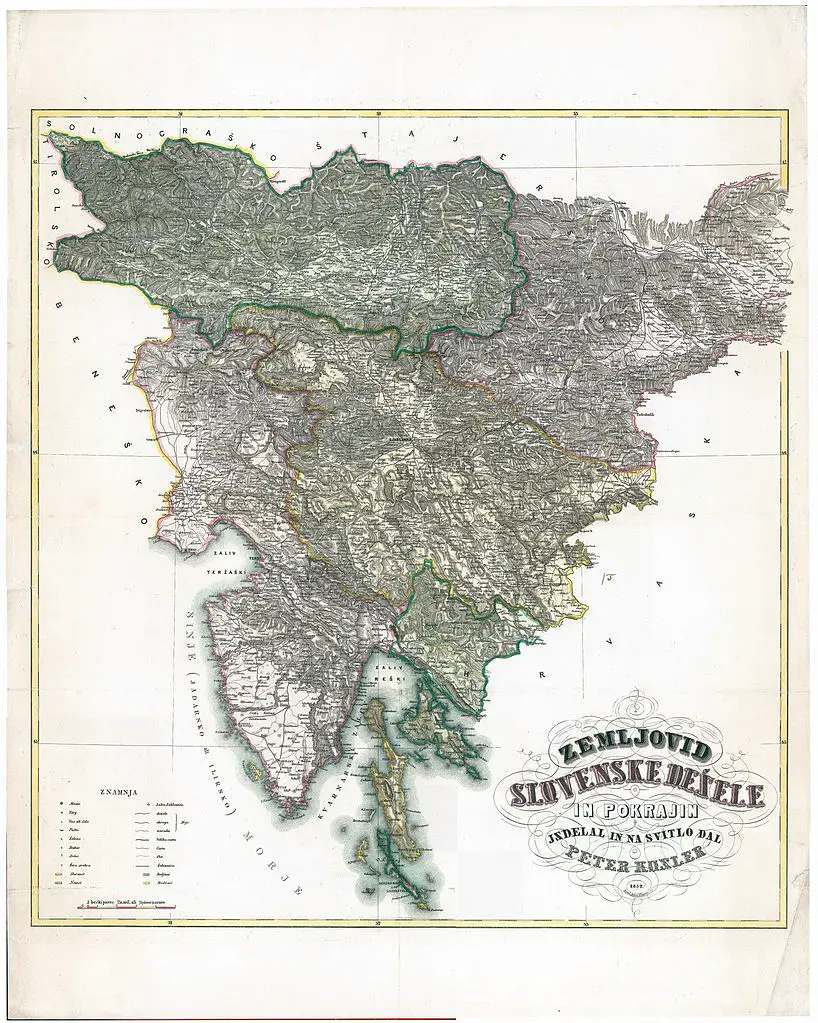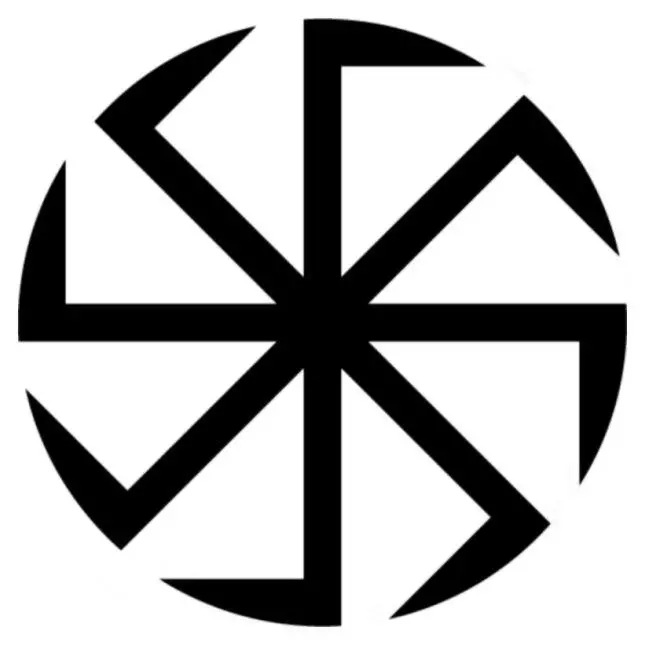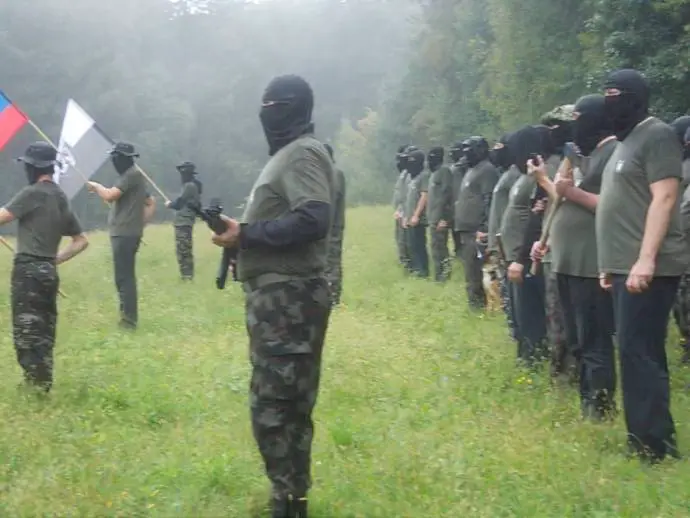
“Greater Slovenia”, by Peter Kozler, a man who, along with his brother, founded the brewery now known as Union. Photo: Wikimedia
As noted on TSN in a profile of the man himself, Šiško has a background in football hooliganism, and Pugliese mentions that both Viole and the Green Dragons, the ultra-supporters of NK Maribor and Olimpija Ljubljana, respectively, were in trouble a couple of years ago for showing the kolovrat (aka Slavic swastika) and Celtic cross.

A kolovrat. Wikimedia - ThomasANeb
The article goes on to draw some distinctions between the far right in Croatia and Slovenia, with the former said to have direct roots in WW2, while the latter is a more recent phenomenon, with connections to both football and music. As Pugliese writes of the neo-Nazi skinhead organisation Blood and Honour (BH):
The group used to organize concerts in private properties in order to avoid an indictment for promoting hatred and intolerance. Two of the main venues for these events were Domžale and Ljubljana. The events were also attended by German neo-Nazis.
Only those who have received a special SMS on their mobile phones can access the venues, by showing it to the gatekeepers. This secretive procedure strengthens the bonds of the members, makes them feel part of a special community, and satisfies the need for belonging, all key factors in radicalization.
However, such activities are not confined to football hooligans or skinheads, as BH has also been found to be active in the Slovenian military. In 2011 “the intelligence service monitored 21 soldiers in this network, including some on active duty and some in the reserves. Even Dejan Padovac, employed in the security detail of the Prime Minister under the Janša and Pahor governments, was found to be a member of Blood and Honour.”
Here it’s perhaps worth noting, as Pugliese does, that Damir Črnčec, who was appointed head of the civilian intelligence service in 2012, when Janša was Prime Minister, downplayed the influence of neo-Nazis in the military, stating that it was difficult to draw distinctions among “patriotism, right-wing extremism and violent extremism”.
The whole story, to be found here, is of interest to those willing to look a little deeper than the chocolate box image Slovenia, and who might be curious as to some of the darker forces underlying moves such as, for example, Demokracija’s recent call for new ethno-nationalist fairy tales to teach children about the “dangers” immigration.







